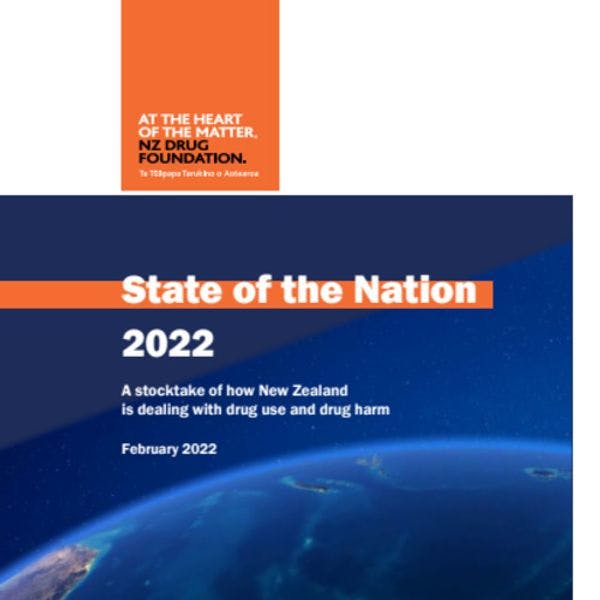Discurso a la Nación 2022 – Un balance sobre cómo Nueva Zelanda está atendiendo el consumo de drogas y el daño causado por las drogas
El análisis de la Fundación NZ Drug se enfoca en cuestiones clave como cambios en el marco legal doméstico, impacto sobre equidad social y reducción de daños. Más información, en inglés, está disponible abajo.
This report pulls together the latest data from a wide array of sources such as Police, the Ministries of Health, Justice and Education, DHBs, Customs, service and treatment providers, and health surveys.
Our hope is that it provides a useful basis for the public, the media, the health sector and policy makers to debate and develop the solutions we need to see an Aotearoa free from drug harm.
As with every other aspect of our lives, the story of drugs in Aotearoa has been affected by the disruption of Covid-19. We’ve attempted to add caveats where we think 2020/21 data are likely to have been affected by lockdown and border disruptions.
But as we’ve all been grappling with the pandemic, life has continued, and along with it so has drug use, drug harm, hospitalisations, exclusions from school, charges and convictions. There are important stories and trends contained in this report that need our urgent attention.
Māori suffer grossly unequitable outcomes in almost every aspect of this report. Drug-related deaths for Māori are three times the rate for non-Māori (page 22); wāhine Māori are 3.6 times more likely to smoke daily than non-Māori women (page 10) and are 2.7 times more likely to use amphetamines (page 16); only 42% of Māori in addiction treatment were double vaccinated as at late-November – half the rate of the general population (page 27); and Māori make up 48% of those convicted for drug possession offences and 61.9% of those sentenced to prison for these offences (page 48).
Alcohol is still by far the most widely consumed drug and causes the most harm, with 19.5% of adults drinking in a way that’s likely to cause them harm (page 5).
Methamphetamine use remains relatively steady, but its impacts on different communities vary greatly. Women living in our poorest neighbourhoods are 18 times more likely to use amphetamines (including methamphetamine) than women living in the wealthiest neighbourhoods (page 16), but our one-size-fits-all approach to the drug doesn’t take these differences into account.
An estimated 94% of those using cannabis for medicinal purposes, 266,700 people, are still accessing the drug through the black market (page 58).
There are still too many young people entering the youth justice system for drug offences – 913 in 2020 (page 50) when we should be offering health responses first, and too many being excluded, expelled, or suspended from school for drugs (page 53).
Alongside these alarming statistics, there has been some progress for health-led and harm reduction approaches.
New Zealand became the first country to permanently legalise drug checking in December 2021 (page 38), and the healthbased methamphetamine initiative Te Ara Oranga has been expanded (page 40).
Changes to our drug laws in 2019 have seen a reduction in charges and convictions, but far less than hoped (page 45) – and how the new law is applied depends on some factors that should not be relevant, including the type of drug used.
The Drug Foundation launched The Level to provide a range of harm reduction advice direct to people who use drugs (page 38), and many other harm reduction initiatives and services have been seeing positive results (page 38-41), but there is much missing, including safe consumption and overdose prevention services.
These are just some of the stories, data points and trends that you’ll find in the report. As you can see, there is a lot of work we all need to do.
Statistics are useful for helping us to see the big picture, but they also run the risk of detaching us from the real harm and trauma behind them.
As you read this report, please remember that each of these numbers represents real people, real whānau and real communities. They need us to take action. Ngā mihi,
Sarah Helm, Executive Director
